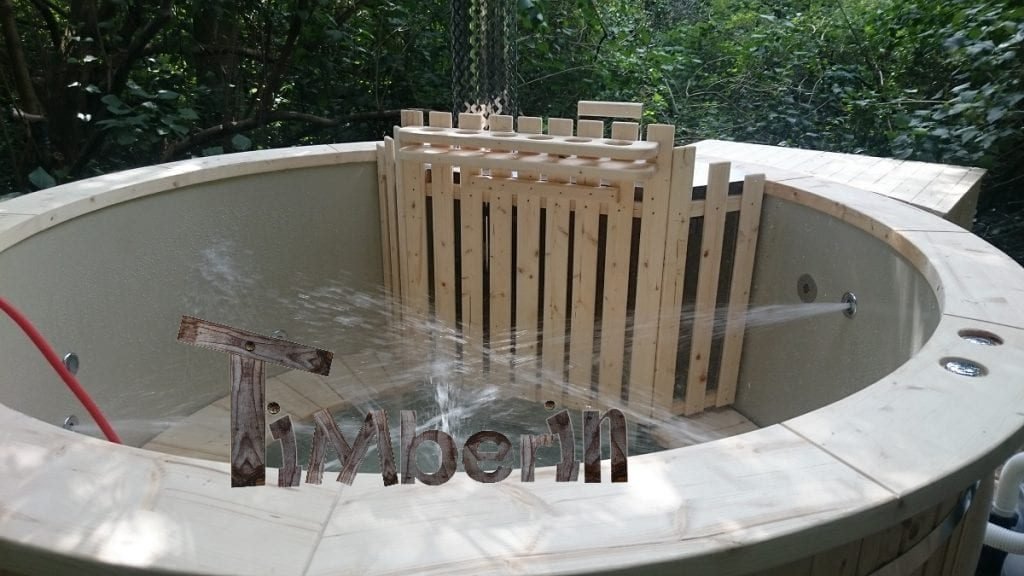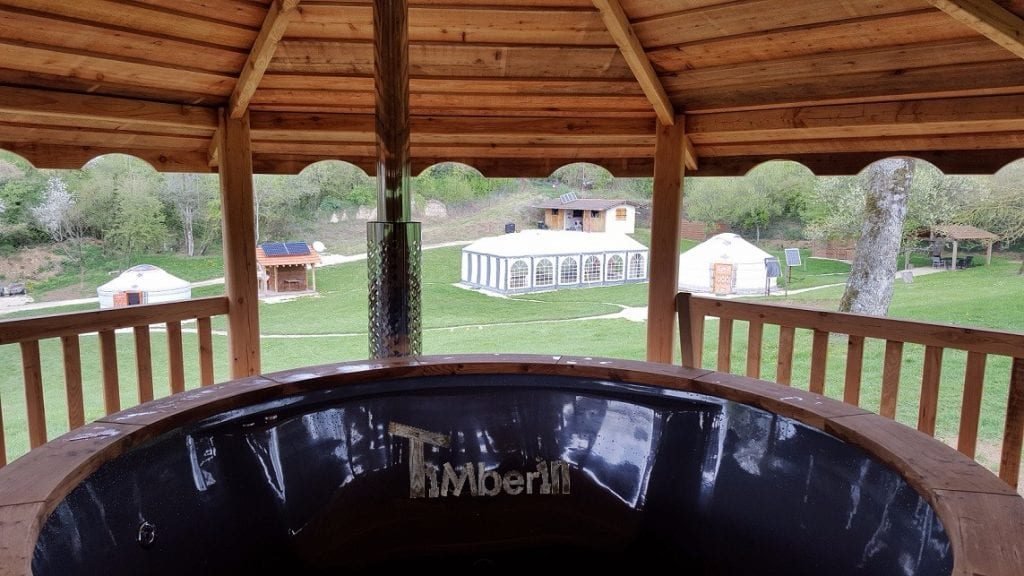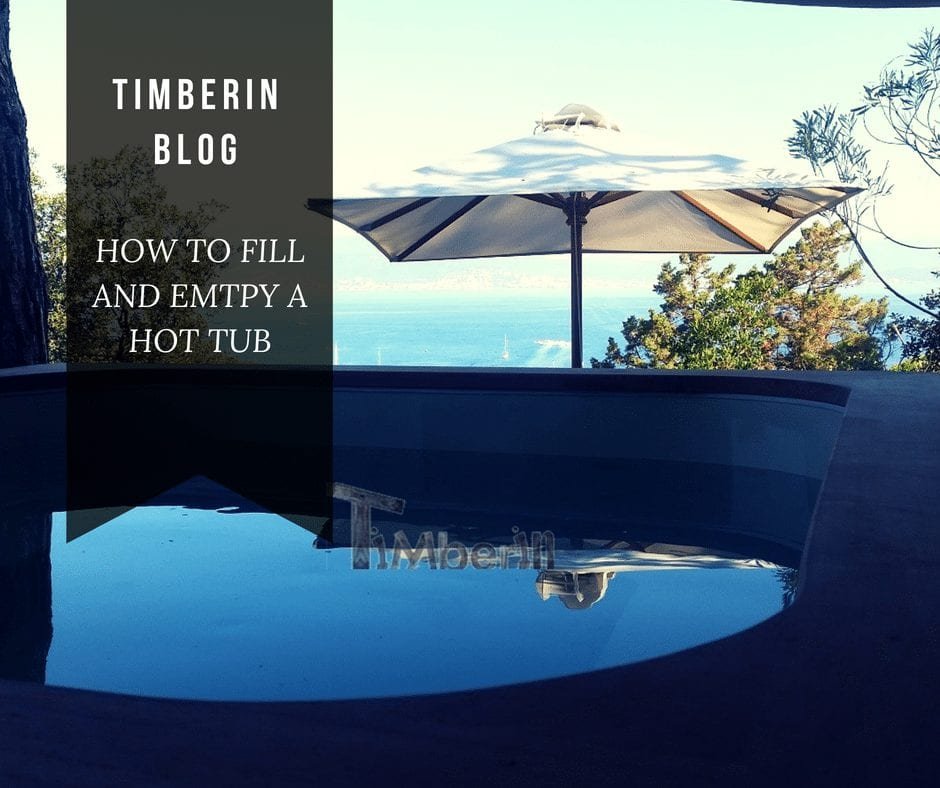One of the very first tasks at hand, after receiving a new hot tub, is figuring out how to fill it up and how to efficiently empty it. In this article, we will be breaking down the basics and guiding you through the different types of water inlets and outlets, available with each of our hot tub models.
Filling an outdoor hot tub
There are a couple of alternatives for filling a hot tub, the first and most straightforward being a standard garden hose. Select a garden hose that is long enough to stretch from your water supply to the hot tub and tip it over the side of the hot tub, placing it inside. This is the easiest solution that does not require any extra connections in the hot tub.
If you are willing to invest a bit more, the hot tub can be equipped with a separate inlet (stainless steel pipe with a ball valve, 32mm diameter) for filling the hot tub. Attach a garden hose to this inlet or connect the inlet straight to your home pipeline.

Emptying a garden hot tub
Just like with the process of filling, there are alternatives for emptying a hot tub to suit anyone’s needs. Each hot tub range, from fiberglass and polypropylene models, to fully wooden hot tubs, can benefit from different types of water outlets.
Wooden hot tubs can be equipped either with an external water tap or a siphon. The former is a stainless steel pipe equipped with a ball valve for hassle-free opening and closing. The standard 32mm diameter (1 inch) ensures that connecting parts, for the one you decide to connect the outlet to a hose or a pipeline, are readily available. To empty the hot tub, simply open the valve. The external water tap is L-shaped and installed on the floor of a wooden hot tub, so it will collect every bit of water. The valve sticks out from the side of the hot tub. Another option, a siphon piece with a plug, similar to a water outlet in a bathtub, is also great for collecting all of the water. Installed on the floor of a wooden model, this water outlet can be opened by simply removing the plug. To simplify this process, we recommend attaching a long string to the ring on the plug. The other end of the siphon is a flexible hose/elbow. This end goes under the hot tub. Make sure that the flexible hose is not crushed between the foundation and the hot tub base. Either the hot tub should be raised a bit to provide space for the flexible hose, or, in case the hot tub is set straight on the ground, a narrow groove is dug in the ground to fit the flexible hose. Just like with an external water tap, we recommend connecting a longer hose to the siphon to redirect the outflow of water. The siphon can be installed in any part of the floor, though preferably not too close to the heater if it is internal.
The same options are available for polypropylene models. The siphon is installed in the exact same way as in a wooden hot tub, however, because of the design difference, external water taps for polypropylene models are not L-shaped, but rather straight. The water tap is installed into the wall, which means that not all of the water is collected, thus to fully empty the hot tub, one must simply mop up the remaining water. If a polypropylene hot tub is with an insulated floor, i.e. a double floor, the external water tap would be L-shaped, installed in the floor, thus collecting all of the water, and sticking out of the side of the hot tub for easy access.

When it comes to fiberglass models, they can also be equipped either with a stainless steel water tap or with a siphon, however, the installation method is a bit different. Our Wellness models with integrated heaters have a water tap that goes under the heater, with the ball valve sticking out from under. The water outlet is connected to the same pipe as the lower heater connection.
For fiberglass hot tubs with a different type of heaters, such as an external wood burning heater, internal snorkel heater or electric heater, other options are available. Such hot tubs can be equipped with a siphon, with the same installation principle as in wooden and polypropylene hot tubs. It should be noted, though, that in fiberglass hot tub, the siphon cannot be installed directly in the center, because the wooden support structure is directly underneath. Pick a location for the siphon a bit off-center, closer to the benches. If you choose an external water tap for such a model, the pipe will be L-shaped as well, but longer than regular.
We hope this short guide helps to paint a clearer picture of all the available water inlet and outlet options! For more information, contact us over email or leave us a comment, and we will make sure to answer your query ASAP.


